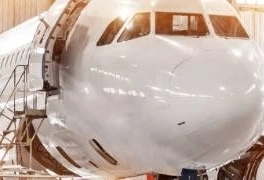Manufacturers have a lot of options to choose from when selecting the optimal printed circuit board (PCB) design for their application…
Applications

Aerospace
PCB’s are used in many applications in aerospace from satellites, to commercial aircraft avionics and radios, to anti-lock braking systems on modern aircraft and the radar and radio systems in our air traffic control centers.

Medical
Today’s medical devices depend on PCB’s for advanced diagnostics and treatment. Everything from implantable pacemakers/Defibrillators defibulators, MRI’s, CT Equipment, patient monitors, surgical equipment, and more.

Military
In military electronics PCBs are used in fighter aircraft, advanced camera systems, war fighter wearable electronics, missiles, munitions, vehicles and naval aircraft electronics. Learn more.

Industrial and Commercial
Electronics and electronic devices are ubiquitous in our everyday lives, from our garage door openers, mobile phone, personal computers, televisions, automotive systems, and much more. Learn more.
Glossary Terms
- Printed Circuit / Printed Circuit Board (PCB) – found in practically all modern electronics. They serve as the mechanical foundation for all of the components in modern electronics, as well as providing all of the circuitry to connect those components electronically to one another.
- Rigid Board / Hardboard – The majority of PCBs – about 90% – are made from a rigid substrate, known as rigid board or hardboard. The inflexible material provides a very stable and inexpensive foundation for component assembly. It can be used in single-sided, double-sided, and multilayer PCBs.
- Flex Board / Flexible Circuit Board – Flexible PCBs—also known as flex PCBs comprising about 10% of worldwide manufacturing —are made from flexible substrates. The flexible material enables the board assembly to bend to fit into tight or compact spaces. They can also accommodate dynamic flex applications, where the circuits can be bent for hundreds of thousands of cycles without failure. They are available in single-sided, double-sided, and multilayer variations.
- Rigid-Flex / Rigid-Flex PCBs – Rigid-flex PCBs are a hybrid of rigid PCBs and flex PCBs; they combine the advantages and eliminate the disadvantages of the other two PCB types by connecting flexible circuits to rigid boards. The resulting design is a board assembly with the versatility of flexible PCBs and the strength and stability of rigid PCBs. Additionally, it makes rigid-flex PCBs suitable for use in much more mechanically challenging and complex electronic designs.
- No-Flow Prepreg – A no-flow prepreg is a composite material in which the resin is cured for longer, reducing the resin’s ability to flow under heat and pressure. No-flow prepregs are critical for rigid-flex designs since they ensure the resin remains contained to the rigid portion of the board. Standard prepregs are not suitable for these hybrid PCB applications, as the normal state of resin flow could compromise the flexible portions of the rigid flex PCB.
- FR4 Material / FR4 Board – FR4 is the most popular PCB substrate, due to its good physical, mechanical, thermal, and electrical performance available at a low price point. These factors make it suitable for use in a wide range of electronic applications. The FR4 designation is used for materials that meet certain requirements as outlined by NEMA LI 1-1998 standards.
Blog
Robotics Industry
Robotics plays an essential role in automation and robotics systems rely on printed circuit boards (PCBs) to control their electronic operations….
What Is a Printed Circuit Board (PCB)?
Printed circuit boards (PCBs) are the foundational building block of most modern electronic devices. Whether simple single layered boards used in…
